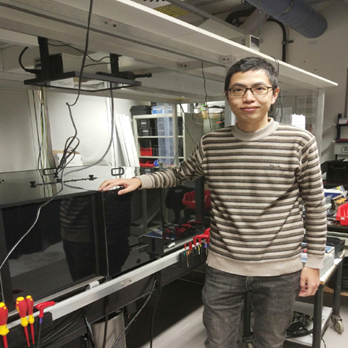
Vibrating 2D Materials Will Lead to Apps
Electronic components in many devices are based on micro-structured silicon carriers, which have almost reached their physical limits and smallest possible structure sizes.
Two-dimensional materials such as graphene, an atomically thin layer of graphite, are being intensively researched. While graphene is purely carbon, there are many other 2D compounds characterized by special optical and electronic properties. Potential applications include solar cells, micro- and opto-electronics, composite materials, catalysis, sensors and light detectors, biomedical imaging, or transporting drugs within organisms.
2D materials are electronically excited just like ordinary silicon solar cells when sufficient light energy hits them. The energy can cause the atomically thin layer to vibrate at the same time, which influences optoelectronic properties.
Previously, it was unknown how strongly light excites such oscillations in a 2D material at room temperature. Now, an international collaborative team led by Tobias Brixner has succeeded in determining the strength of the oscillation excitation upon light absorption in 2D material dichalcogenide at room temperature for the first time.
Postdoctoral researcher Dr. Donghai Li in Würzburg developed a method of “coherent 2D microscopy” that combines the spatial resolution of a microscope with the femtosecond time resolution of ultra-short laser pulses and with the multi-dimensional frequency resolution. This allows Li to quantify the influence of the oscillations. This finding is helpful in the further development of 2D materials for specific applications.
